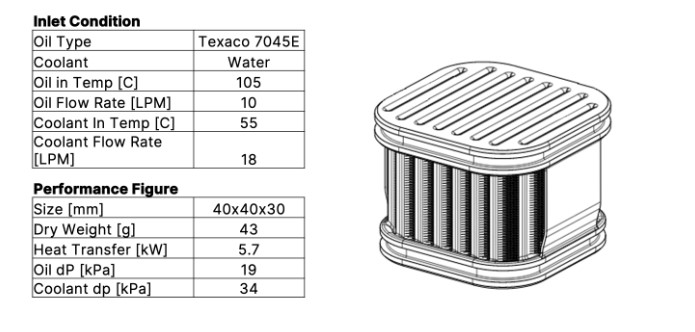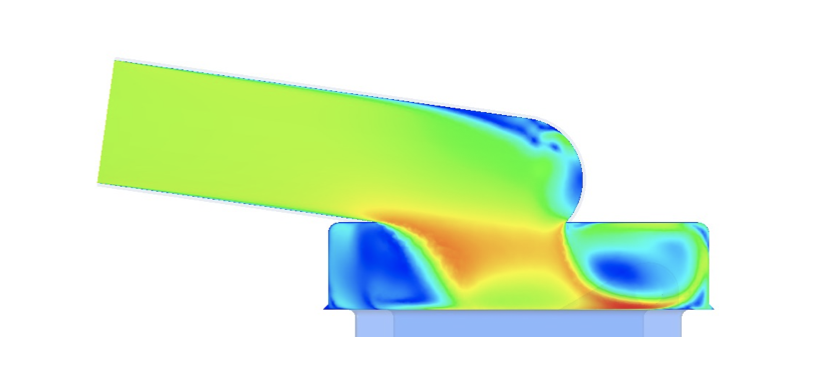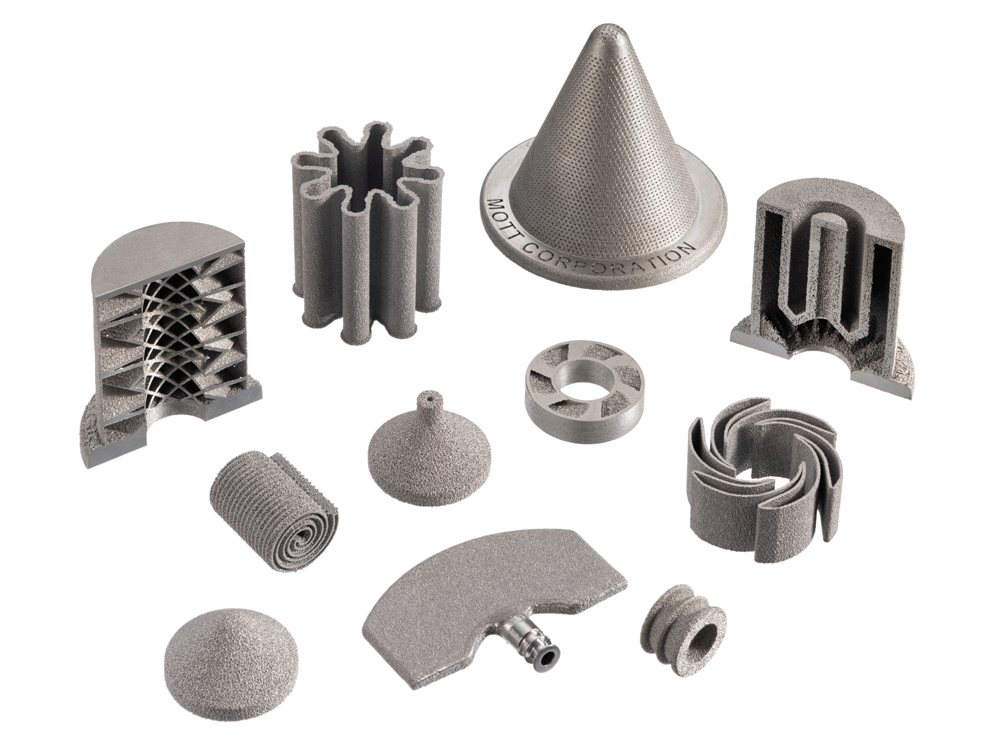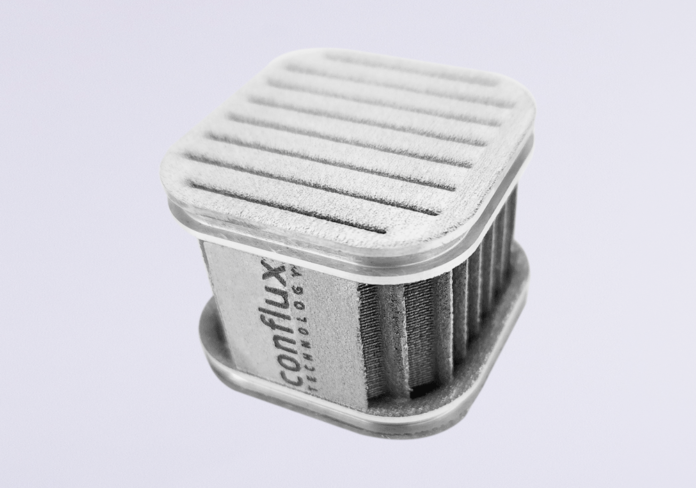If you’re a regular reader of 3D ADEPT Media, you may already be familiar with Conflux Technology, an AM company that specializes in the development of thermal and fluid applications.
The company that is reinventing high-performance heat exchangers with Additive Manufacturing has revealed the latest addition in its portfolio of applications: a complex 3D printed core that can be embedded in a traditionally manufactured part or casing. Created with a patented technology of the company – a Conflux CoreTM – this Conflux Cartridge heat exchanger can be serviceable, customisable, and interchangeable.
Conflux CoreTM is a technology that provides lower pressure drop and higher heat transfer. “Small scale structures and internal geometries only possible with 3D printing provide precise control of the ratio of surface area presented to each fluid, optimizing heat transfer, turbulence and pressure drop.
The structural features are also active surfaces, minimizing dead space and increasing performance by volume”, the company explains.
That being said, the company faced two main challenges during simulation: the first one consisted in ensuring that the selected core geometry performs in maximizing the heat transfer while minimizing pressure drops; the second required to consider the impact of manifolds in calculating pumping requirements.
To address them, the team utilized computational fluid dynamics (CFD) simulations for the core geometry performance and manifold impact. The company details the process leveraged below:
For the core geometry performance:

The initial geometry was used to perform computational fluid dynamics (CFD) simulations. With these, the heat transfer rate and pressure losses associated with the HX core could be better estimated. This was undertaken using Ansys Fluent on an in-house high performance computing cluster optimized specifically for CFD simulations.
Meshing is a necessary step in the CFD process. This is where all solid and fluid domains are broken up into a huge number of smaller domains from which a numerical solution can be found. A good quality mesh is required to ensure the stability and accuracy of the results. The mesh was generated based on standard meshing practices. Inflation layers were built on the no-slip walls, and sizing controls ensured good mesh metrics.
Appropriately scaled boundary conditions were used for the simulation. Additionally, various contours and vectors of temperature, pressure and velocity were generated to assess the core performance in a greater depth of detail. These CFD simulations gave insights into performance for further refinements that could not be attained through spreadsheet calculations.
The manifold impact:

Manifolds are required to accept the fluid inlet streams, and then direct them through the core of the heat exchanger and into the outlet fluid streams. Given manifolds add to the fluid pressure losses through the heat exchanger, they must be considered when calculating pumping requirements
In this case, porous media modelling was performed to assess the pressure drops associated with the manifolding, and any implications of this.
Lastly, the balance of thermal and hydraulic performance for complex thermal systems through scalable and low-cost production make it ideal for small energy systems. Furthermore, the ability to manufacture the cartridge heat exchanger in large batches with industrial powder bed fusion (PBF) machines keeps costs lower than equivalent traditionally manufactured options, the company notes.
A collaboration for 3D printed thermal solutions
 On another note, Mott and Conflux partner to bring Conflux’s 3D printed thermal solutions to North American markets. Established in 1959 and headquartered in Farmington, Connecticut, Mott is a precision filtration company that operates across four core markets: Medicine, Computing Power, Clean Energy, and Space Exploration.
On another note, Mott and Conflux partner to bring Conflux’s 3D printed thermal solutions to North American markets. Established in 1959 and headquartered in Farmington, Connecticut, Mott is a precision filtration company that operates across four core markets: Medicine, Computing Power, Clean Energy, and Space Exploration.
The company produces porous metal 3D printed components with integrated hardware – a capability that improves performance in a fraction of the design envelope.
“Working with Conflux expands our ability to solve our customers’ toughest thermal challenges in one integrated solution,” says Sean Kane, Vice President of Business Development & Strategy at Mott.
Remember, you can post job opportunities in the AM Industry on 3D ADEPT Media free of charge or look for a job via our job board. Make sure to follow us on our social networks and subscribe to our weekly newsletter : Facebook, Twitter, LinkedIn & Instagram ! If you want to be featured in the next issue of our digital magazine or if you hear a story that needs to be heard, make sure to send it to contact@3dadept.com






